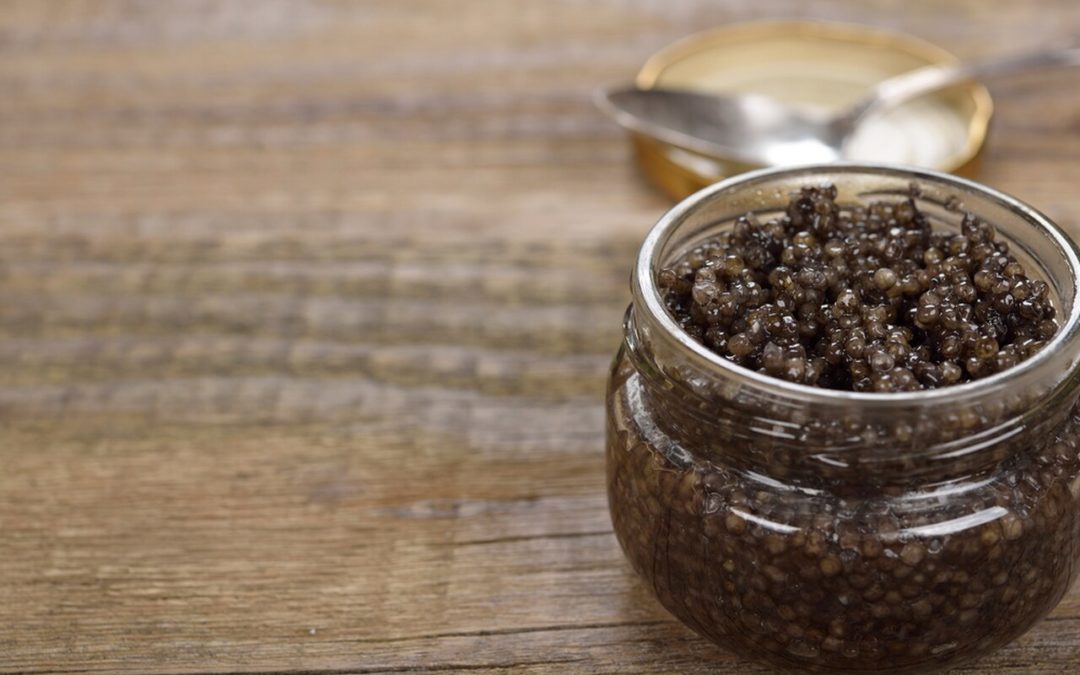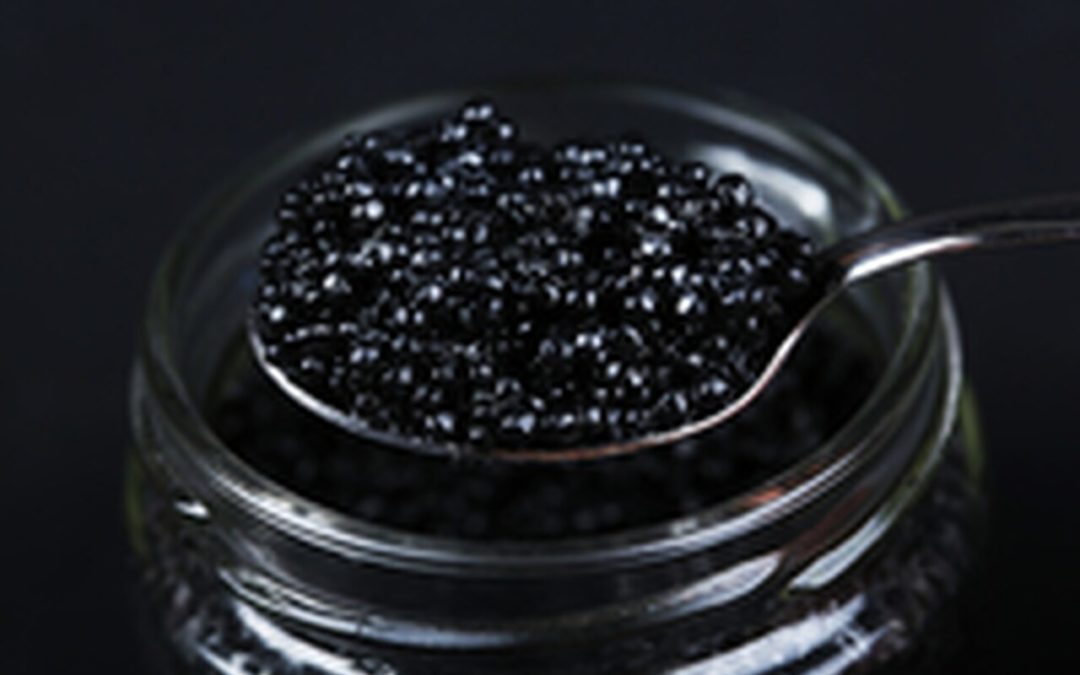
by HOCAFF Team | Sep 8, 2016 | General
The history of caviar tend to lead us to exotic places like the Caspian or Black sea. However, American waters had been teaming with this untapped treasure long before the abundance of sturgeons caught the eye of Henry Schact. Schact is a German immigrant whose name is inextricably linked to caviar because of his pioneering work in establishing the American caviar industry.
Caviar is a captivating subject because of the complexities and simplicities of its past present and future. Unlike the caviar of Europe, the American beginnings of this fragile fare evolved in a round-about sort of fashion. For instance, American Caviar was not always considered the best caviar or a rarefied treat that belonged only on the tables of the wealthy. In fact, the American Caviar story began rather unromantically as part of the diet for Native Americans in the Northeast. That is until Schact found a more lucrative use for the giant sturgeons teaming in the rivers of his new country.
Once Schact recognized the potential at his disposal, the American history of caviar had begun. The industrious and enterprising skills of this man lent themselves well to the rapid development and growth of the caviar industry. Despite the fact that it may not have been considered to be the best caviar, due to the preservation and shipping methods available at the time, before long the United States was producing 90% of the world’s caviar. Schact exported caviar in barrels all over Europe for a dollar a pound. At one point in the American history of caviar, the surplus of this delicacy became part of the nation’s drinking salon marketing strategy. Huge bowls of heavily salted sturgeon roe was placed on bar counters; free for the taking. The saltiness of the caviar made drinkers thirsty which in turn increased liquor revenue.
Overfishing eventually caused the American caviar industry to suffer the same fate as its European counterpart. With the sturgeon population dwindling rapidly, the value of the ethereal pearls increased. As the supply and demand ratio changed, various environmental programs were initiated to sustain the sturgeon population while improving harvesting and preservation methods. And so, fish farms began to pop up near sturgeon habitats.
By 1906 another innovator, Harry Dalbow, introduced the idea of canning caviar. Canning allowed for progress in preservation techniques and longer shelf life. Incidentally, the idea of putting the best caviar in small glass jars was also birthed in the American Caviar industry. Before long, caviar began to claim its status as a luxury food in the United States. Not surprisingly, the pricier caviar became the smaller the portions. This was due to the fact that opening a can of caviar further decreased the shelf life of this delicacy. Eventually, American caviar that was once pushed on drinkers, sold by the barrel or for pennies in American restaurants was now being treated as priceless gems.
Today, the history of caviar from its American beginnings have come full circle. The quality of caviar in the United States rivals that of the best caviar from the Caspian Sea and Black Sea.
Buy Caviar online and follow House of Caviar and Fine foods on our Facebook page to explore the many ways you can enjoy or incorporate caviar into your lifestyle. You can also purchase the freshest domestic or imported caviar and other specialty foods such as black, white and summer truffles, foie gras and accessories from our caviar online store.

by HOCAFF Team | Jul 15, 2016 | General
Learn the Origins of Your Favorite Delicacy: The History of Caviar
Long before Caviar became affiliated with royalty, it was part of the diet in areas where Sturgeon fish was in great abundance. Although accounts of the history of Caviar does not pin a specific date on when the epicurean value of this decadent cuisine began, some records date as far back as pre-historic times.
In essence, caviar is a decadent preparation of the unfertilized eggs or roe of a sturgeon fish. Based on some accounts, caviar is actually the variant of the Persian word “khaya-dar” which means having eggs or egg bearing fish. The Persians who collected the fish eggs for their perceived medicinal value may also have been the first to prepare and appreciate their unique piquancy. However, the tradition of salting roe originated with the Chinese who used this method to preserve Carp eggs.
Ancient classical literature contains several references about caviar. Aristotle who lived during the 4 th Century B.C. spoke so highly of the Sturgeon fish eggs that it became a consummate offering at banquets. Since Sturgeons were found mainly in the Caspian Sea and Black Sea, it was the Russian Tsars that launched its popularity as an opulent epicurean delight. Its status was also significantly heightened towards the end of the 1800s, when the French started importing caviar from Russia, such as Beluga Caviar. In order to preserve the roe for transporting purposes however, the delicate eggs were heavily salted and packed into wooden crates. Despite the fact that these crude processing methods belied the quality of the end product, through consistent demand, Caviar, managed to continue its evolution as a highly sought after and pricey fare. At one point in Britain’s history, Sturgeons were reserved exclusively for the kings and elite of that society and was even knighted as the “Royal Fish”.
Still, at one point in American history, a serving of caviar was sold for a nickel in fine restaurants. Even more unbelievable, this salty delicacy was at times given to saloon patrons to encourage spending on liquor. The proliferation of Sturgeon in the Delaware River eventually spurred the development of a caviar business in 1873 by a German immigrant by the name of Henry Schacht. Soon Schacht began exporting Caviar throughout the world, including to Russia, for a mere dollar a pound. By the end of the 19th century, the United States was producing approximately 90% of the world’s caviar.
Today, this ultimate luxury food is available in a range of prices and varieties. Although the best caviar is a matter of preference, experts say quality is determined by handling and a number of other variables such as maturity of the eggs, texture, color and depth of flavor.
Topping the list of most expensive and well known (yet restricted to sell in the US) is the Beluga Caviar. Although not all Caviar lovers will agree that this is the best of the best, it definitely commands the highest price. Beluga Caviar along with Sevruga and Ossetra are considered to be the most sought after and expensive Caviar. However, overfishing has depleted and endangered the Caspian Sea Sturgeon population, which has made Beluga Caviar illegal to import to the USA. As the Beluga becomes less available, it has created a growing demand for Golden Imperial Ossetra or Kaluga Caviar . Experts say the Kaluga roe is an exquisite substitute that is similar in appearance and flavor to Beluga Caviar. The selection of Kaluga Caviar comes from the Huso Daricus Sturgeon and Amur Sturgeon eggs. Most importantly for many of today’s consumer, it is a sustainable product.
The fall off of supply of Caviar from the Caspian and Black Sea has also expanded interest and the market for other types of fish roe including Hackleback, Royal White Sturgeon , Paddlefish, Bowfin, trout and salmon, amongst others. For instance, the sweet buttery and nutty flavor of the Hackleback Caviar is similar to Caspian Ossetra. As such, as caviar lovers expanded their palate, many consider domestic caviars to be an appealing and affordable alternative to their international counterparts.


